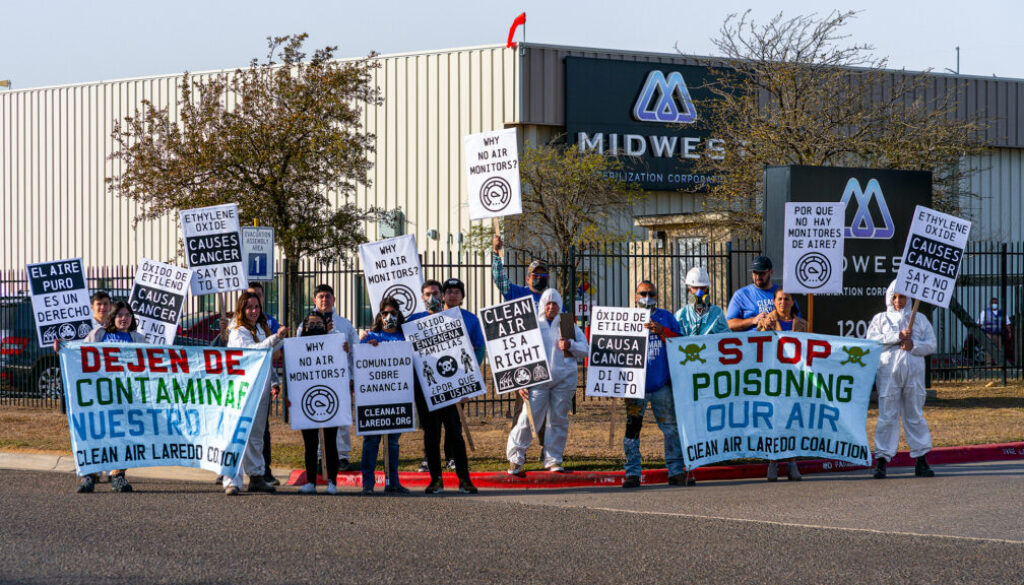EPA proposes limits on cancer-causing gas used to sterilize medical equipment
The US Environmental Protection Agency (EPA) on Tuesday proposed new standards to protect workers and communities from exposure to ethylene oxide, a toxic gas used to sterilize medical equipment and some spices. The agency estimates the new health protections could cut commercial facilities’ emissions of the colorless cancer-causing gas by 80% per year.
EPA will require the 86 commercial sterilizer facilities across the US to install pollution controls within 18 months of the agency issuing a final rule.
“EPA estimates that these reductions would lead to reduced ethylene oxide related risks at all of the communities located near the sterilizers to levels below the Clean Air Act benchmark for elevated cancer risk,” said Tomas Carbonell, the deputy assistant administrator for stationary sources at the EPA Office of Air and Radiation, in a press briefing.
The proposed restrictions come less than a week after the EPA announced another proposed rule that it says would lead to a 63% reduction in ethylene oxide emissions nationwide compared to 2020.
Ethylene oxide has been linked to non-Hodgkin’s lymphoma and breast cancer, among other cancers. A lifetime of exposure to the toxic chemical at concentrations found near sterilizers can boost a person’s risk for developing cancer to above the federal threshold of 100-in-a-million, according to a 2022 EPA analysis, although the gas has been linked to cancer for decades. The agency has also identified 23 ethylene oxide sterilizer facilities that pose high cancer risks to communities.
Two types of facilities that emit ethylene oxide disproportionately pollute communities of color, low-income communities, and non-English speaking communities, according to a report published in February by the Union of Concerned Scientists.
Hundreds of legal claims have been filed across the US by people who have suffered health effects from exposure to ethylene oxide pollution. Last year, an Illinois resident diagnosed with breast cancer after living near a sterilizer facility for decades was awarded $363 million, although a second resident with cancer did not win her lawsuit against the company.
“Fenceline monitoring” and offsite warehouses
“Overall, I’m very happy that there is a proposal for updated standards for commercial sterilizers,” said Darya Minovi, a senior research analyst at the Union of Concerned Scientists.
“These regulations are long overdue – it’s been nearly a decade since they were last updated.”
But Minovi expressed concerns about what the proposal lacks, including its absence of a requirement that facilities set up monitoring at the property line (called “fenceline monitoring”) to assess the exposure of nearby residential neighborhoods, schools, and workplaces.
“That’s something that has been requested many times by communities that are near these facilities so that they can have a better understanding of their own exposure,” said Minovi.
And while the rule does cover warehouses located onsite at sterilizer facilities, it does not cover offsite warehouses, she added, noting that facilities sometimes store sterilized equipment in warehouses at other locations.
“That sterilized equipment oftentimes is still off-gassing ethylene oxide,” said Minovi. “Many of these warehouses are not covered by any Clean Air Act regulation.”
“Honestly, what we eventually really need to be talking about is how do we phase out the use of this substance in sterilization,” she said, pointing to hydrogen peroxide as one alternative scientists are evaluating.
“We’re using a very toxic substance to sterilize medical equipment that will benefit many people who rely on those medical devices, but at the same time this gas is also causing cancer and increasing cancer risks among people who live near these facilities.”
“Shock, outrage, and deep concern”
Many community members living near sterilizer facilities have long been unaware that the air they breathe could destroy their health.
In the summer of 2022, the EPA reported ethylene oxide levels 60 times more toxic than previously known near the Sterilization Services of Tennessee facility in South Memphis, a predominately Black community. The announcement “created an atmosphere of shock, outrage, and deep concern,” said Angela Johnson, the director of operations and community engagement at Memphis Community Against Pollution, a local grassroots organization.
“Some had been residing in the area since the 1960s [and are] raising families, caring for aging loved ones, or taking care of grandchildren, so to hear that this threat had been so close to them for so long was beyond disheartening,” she said.
Ethylene oxide emission from the Midwest Sterilization Corporation in Laredo, Texas, a mostly Latino city, have increased cancer risk for about half the city’s residents, including over 37,000 children, according to an investigation by ProPublica and The Texas Tribune.
“We have had to mobilize and advocate for ourselves, which is why the Clean Air Laredo Coalition has gathered funds from four local governmental entities to create and establish a groundbreaking and independent fenceline air monitoring program around [the] Midwest [facility],” said Sheila Serna, the climate science and policy director of the Rio Grande International Center.
While Serna called the EPA’s proposed regulations “a welcome first step,” both she and Johnson said communities need change to come sooner than 18 months after the EPA rule is finalized.
(Featured Image: A protest outside the Midwest Sterilization Corporation in Laredo, Texas. Photo by the Rio Grande International Study Center.)
 EWG
EWG


